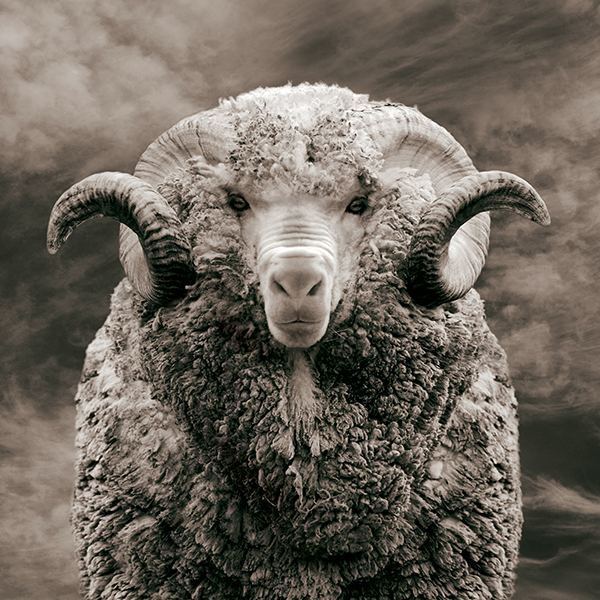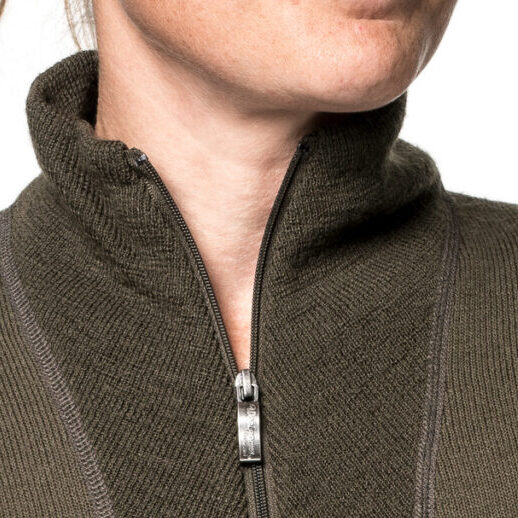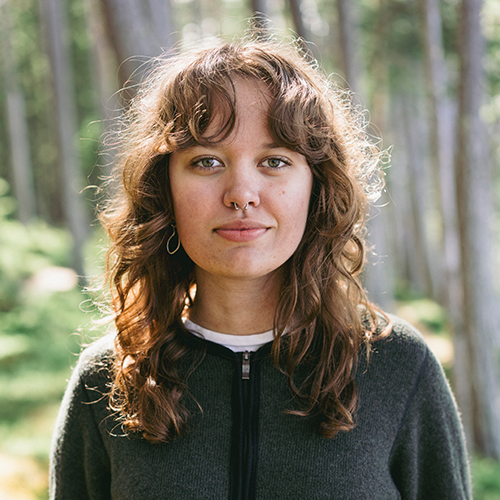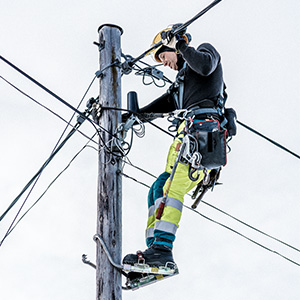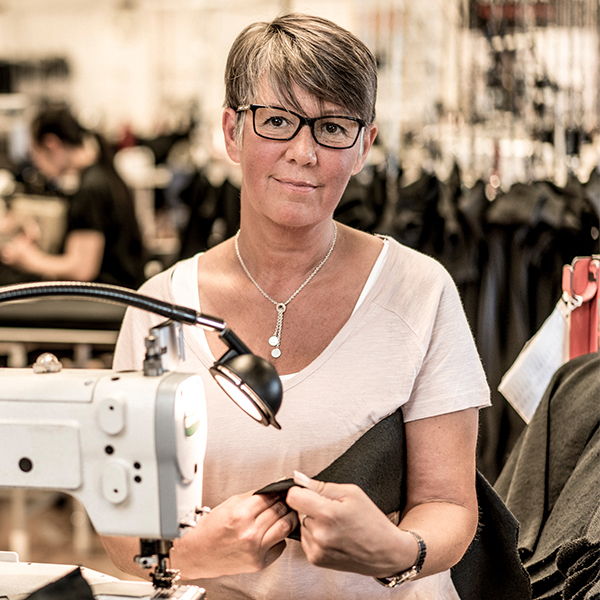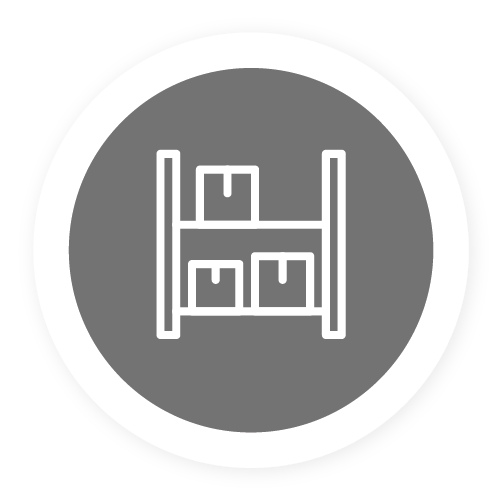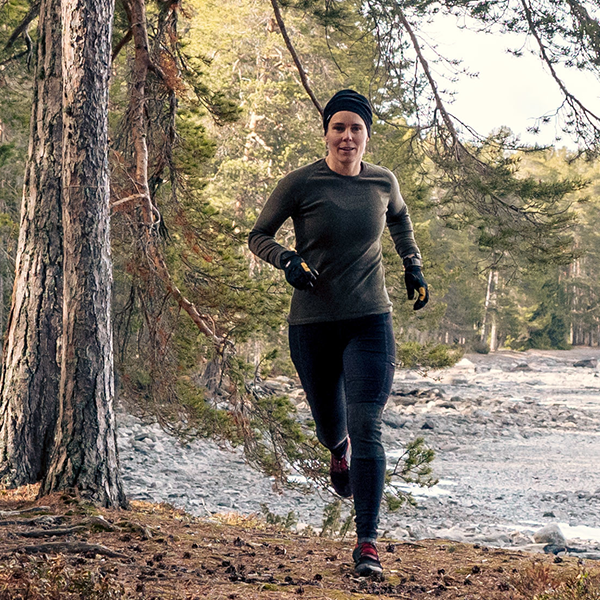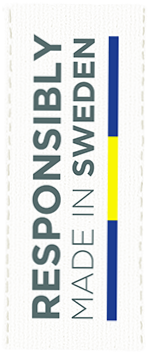THE STORY OF A PERSISTENT FACTORY IN THE NORTH
Woolpower’s journey has taken a winding path and faced many challenges. However, by continuing to believe in the idea of high-performance products and Swedish production, the company has grown to have Sweden’s largest clothing production factory. In the late 1960s, unemployment in Jämtland was high. Many packed their bags in the hope of finding a better life in the larger cities to the south. But some people held on and coined the phrase “We won’t move.”
They demanded that job opportunities be moved to them instead of the other way around. They were heard, and in 1969, the Cooperative Association (KF) decided to establish a factory in the town, focusing on the production of nylon stockings. The start was turbulent, but eventually, things turned around thanks to the determination, competence, and innovative spirit of the people in the factory. Join us on Woolpower’s journey through the ages.

FROM SETBACK TO TRIUMPH

OWNERSHIP CHANGES, NEW ACQUISITIONS & THE BEGINNING OF SOMETHING NEW
The 1980s
While the factory in northern Sweden had embarked on a new knitting technique, international competition was rapidly increasing. The 1980s became a turbulent decade with many ownership changes for the stubbornly persistent sock factory continuing its production in Sweden.
Despite the investment in terry socks, Vinetta faced tough years. In Sweden, they had contractual wages and compensations for sick leave, studies, and parental leave. This made it difficult to compete price-wise with brands that had their production abroad.
However, the belief in Swedish industry has always been strong. Instead of following the trend and moving their production abroad, they chose to invest more in specialty products. They transitioned from manufacturing only socks to also including base layers. This change laid the foundation for the range that Woolpower offers today.
The focus on warm garments continued, and together with the armed forces, the popular Jacket 90 was developed and launched. The jacket became very popular with both military personnel and civilians, and today it is sold under the name Full Zip Jacket.

PIONEERING SUSTAINABILITY
The 1990s
In the mid-90s, the company began to take shape into what Woolpower is today. Thanks to the new heat-insulating material Ullfrotté, new products were developed, and the garments began to be labeled with the seamstresses’ name tags.
In the 90s, the company was bought by three employees from the factory. The new owners saw opportunities to further develop products made from Ullfrotté, and the company also changed its name to Ullfrotté AB.
By investing in a machine park for circular knitting of base layers from Germany, they were able to scale up production further and develop more products. Previously, all circular knitting had been done on modified sock machines.
During this period, several efforts were made for development and sustainability. The focus was on products made from organic cotton and later also organic wool. Ironically, it turned out that these efforts were a bit ahead of their time, and consumers did not demand the products that had been developed. Instead, they chose to focus entirely on Ullfrotté.
In 1998, the clothes began to be signed with the names of those who sewed them, and the seamstresses became their own quality controllers. It was something that wasn’t very noticeable at the time, but today it is a very significant part of the work in highlighting the people behind the garments.

NEW OWNERSHIP AND INTERNATIONAL SUCCESS
The 2000s
The company rebranded to become today’s Woolpower. A new owner, organization, and management team took over, actively working to build a stable and secure company with a strong focus on the people behind the garments.
In the early 2000s, the company was sold again. The sole owner became Gränsforsgruppen with Gabriel Brånby at the helm.
A new organization and management were established with current owners Adam and Daniel Brånby in the leadership team. Neither of them had any knowledge of the textile industry, but taking over a well-oiled machinery with skilled and loyal employees allowed them to focus on their strengths: marketing and organizational skills.
Significant investments were made to build a stronger and more stable organization.
Additionally, a comprehensive approach was taken towards the brand. “Ullfrotte AB” performed poorly as a name in the international market. It did not clearly associate with wool and was difficult for many to pronounce. In 2006, the name Woolpower was launched along with the successful marketing campaign “Fryser du? Så onödigt!” (“Freezing? Why?”).

RESPONSIBLY MADE IN SWEDEN
The 2010s
From the outset, the factory in Östersund has aimed to foster growth and employment opportunities in the region. Since 2010, Woolpower has also actively worked to promote integration, and today it stands as a significant international workplace.
In 2010, brothers Adam and Daniel Brånby became the new owners of Woolpower. Both are driven by strong values that are reflected in the company’s vision and business idea — Swedish production with a focus on high quality and the people behind the products.
Demand for Woolpower’s products surged during the 2010s, leading to a pressing need for more personnel. As sourcing sewing skills within Sweden became increasingly challenging, the company’s philosophy was put to the test. The solution was to recruit personnel from countries where the skills existed but job opportunities were lacking.
In recent years, Woolpower has actively worked to harness the expertise brought by immigrants. With its core values intact, Woolpower has become a key player in integration and collaboration for newcomers within Swedish society.

A UNIQUE INVESTMENT FOR THE SWEDISH TEXTILE INDUSTRY
The 2020s:
In 2021, Woolpower undertook a unique initiative for the Swedish textile industry by constructing Sweden’s largest clothing production factory. Through this new facility, Woolpower gained a larger platform to advocate for its values of sustainable, Swedish clothing production.
During the 2010s, the company expanded further and realized it was time to move to new premises capable of handling larger-scale production. Once again, the owners chose to retain production in Sweden and Östersund. As one of the few textile factories remaining in Sweden, and the only one with large-scale sewing production, Woolpower continues to defy conventional practices in the clothing industry.
Keeping production in Sweden was also a statement. As a company, it’s important to take responsibility and act in a way that contributes to a bright future. We are proud of our business model and want to demonstrate that it’s possible to produce clothing in a sustainable and profitable manner in Sweden.
Finally, Woolpower’s long journey has come together. From the beginning, we needed to combine the persistence of Jämtland with the strength of people from outside. Regardless of the era or societal trends, employees have been the key to success. It’s a proud legacy that we hope to continue, welcoming all who wish to work with us, now and in the future.





